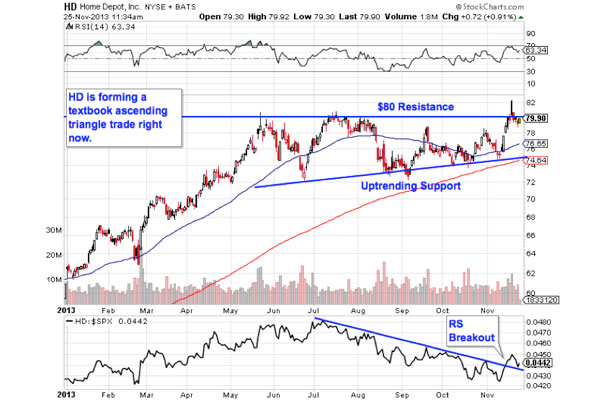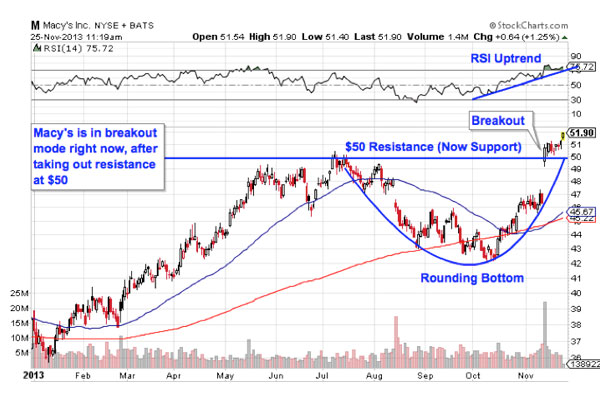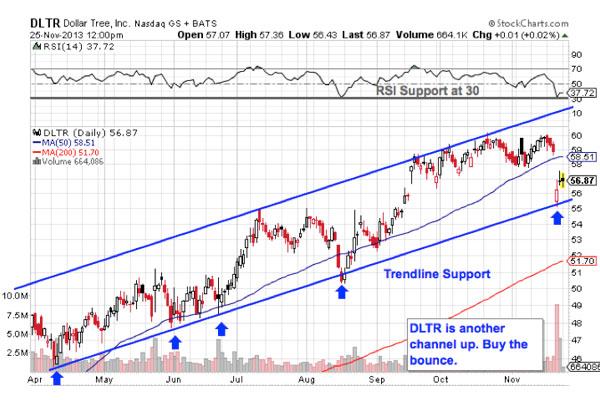Celgene (NASDAQ: CELG ) shares have soared more than 46% so far in 2013. This booming biotech stock can't go much higher, right? Surely, it's time now to take profits. Actually, the company just announced two developments that add to the reasons to buy Celgene rather than sell.
Facing the giants
For a company known for its blood cancer drugs, Celgene has been quite excited about anti-inflammatory drug apremilast. Clinical results for apremilast have been positive, but some observers have been a little skeptical about the drug's potential in the face of stiff competition. Celgene today announced more results from a phase 3 study of apremilast that could melt some of that skepticism.
Patients with psoriatic arthritis who took 20mg doses of apremilast for 52 weeks showed ACR 20 scores of 63%. Patients taking 30mg doses demonstrated ACR scores of 55%. These ACR scores are measurements established by the American College of Rheumatology that reflect 20% improvement in tender or swollen joint counts as well as 20 percent improvement in three other criteria. Apremilast's 52-week results show significant improvement from earlier results.
Hot Biotech Companies To Watch For 2014: Prima BioMed Ltd (PBMD)
Prima BioMed Ltd is a biotechnology company is engaged in the development and commercialization of medical therapies with a focus on oncology. Its product candidates in development include Cvac, an autologous dendritic cell vaccine for ovarian cancer, monoclonal antibodies for multiple tumour types, and an oral formulation for the human papilloma virus (HPV), vaccine. Its product candidate Cvac is a dendritic cell therapy, for which it is conducting a Phase IIb trial for the treatment of ovarian cancer. Cvac is designed to target the tumour antigen mucin-1, which is expressed at high levels on different tumour types. It also has two preclinical product development programs. In May 2011, Prima BioMed GmbH, a 100 % owned subsidiary of Prima BioMed Ltd, was incorporated in Germany. In May 2011, Prima BioMed Middle East FZLLC, a 100 % owned subsidiary of Prima BioMed Ltd, was incorporated in the United Arab Emirates.
Advisors' Opinion: - [By Monica Gerson]
Prima Biomed (NASDAQ: PBMD) shares dipped 38.59% to touch a new 52-week low of $1.44 after the company reported top-line analysis of CVac Phase 2 trial.
- [By Monica Gerson]
Prima Biomed (NASDAQ: PBMD) dropped 38.17% to $1.45 after the company reported top-line analysis of CVac Phase 2 trial.
Tower Group International (NASDAQ: TWGP) plummeted 24.31% to $10.49. Tower Group announced its plans to release its Q2 results during the week of October 7, 2013. FBR Capital downgraded the stock from Outperform to Market Perform.
Hot Biotech Companies To Watch For 2014: Sanofi(SNY)
sanofi-aventis engages in the discovery, development, and distribution of therapeutic solutions to improve the lives of everyone. The company offers a range of healthcare assets, including a broad-based product portfolio in prescription drugs, OTC/OTX, generics, vaccines, and animal health. It has a strategic alliance with Regulus Therapeutics Inc. to discover, develop, and commercialize micro-RNA therapeutics, initially in fibrosis. The company was founded in 1970 and is headquartered in Paris, France.
Advisors' Opinion: - [By C.R. Jackson]
Fanapt was discovered by Hoechst Marion Roussel in 1995 as a novel atypical antipsychotic agent. Hoechst was a German life-sciences company that became Aventis Deutschland after its merger with France's Rhône-Poulenc in 1999. When the company joined with Sanofi-Synthélabo in 2004, it became a subsidiary of the Sanofi-Aventis (SNY) the French pharmaceutical conglomerate. In 1997, Hoechst sold the research rights to Titan Pharmaceuticals (TTNP.OB). Then Titan quickly sold the worldwide rights to Novartis in 1998. Novartis then sold the Phase 3 development rights for loperidone to Vanda in 2004. Vanda originally attempted to get FDA approval for Fanapt in 2008, but the FDA refused to approve iloperidone. The agency required an additional clinical trial.
Organovo Holdings, Inc. (Organovo), formerly Real Estate Restoration & Rental, Inc., incorporated in 2007, is a development-stage company. The Company has developed and is commercializing a platform technology for the generation of three-dimensional (3D) human tissues that can be employed in drug discovery and development, biological research, and as therapeutic implants for the treatment of damaged or degenerating tissues and organs. On December 28, 2011, Real Estate Restoration and Rental, Inc.�� (RERR) entered into an Agreement and Plan of Merger, pursuant to which RERR merged with its, wholly owned subsidiary, Organovo (Merger Sub). On February 8, 2012, the Company merged with and into Organovo Acquisition Corp. (Acquisition Corp.), a wholly owned subsidiary of Organovo, with the Company surviving the merger as a wholly owned subsidiary of Organovo Holdings (the Merger). As a result of the Merger, Organovo acquired the business of Organovo, Inc.
The Company has collaborative research agreements with Pfizer, Inc. (Pfizer) and United Therapeutic Corporation (Unither). As of March 31, 2012, it has five federal grants, including Small Business Innovation Research grants and developed the NovoGen MMX Bioprinter (its first-generation 3D bioprinter). The Company is engaged in the development of specific 3D human tissues to aid Pfizer in discovery of therapies in two areas of interest. In addition, in October 2011, it entered into a research agreement with Unither to establish and conduct a research program to discover treatments for pulmonary hypertension using its NovoGen MMX Bioprinter technology. Additionally, under the research agreement with Unither, the Company granted Unither an option to acquire from the Company a worldwide, royalty-bearing license in certain intellectual property created under the research agreement solely for use in the treatment or prevention of pulmonary hypertension and all other lung diseases.
The Company�� NovoGen MMX Bioprinter is an automate! d device that enables the fabrication of three-dimensional (3D) living tissues comprised of mammalian cells. A custom graphic user interface (GUI) facilitates the 3D design and execution of scripts that direct precision movement of the dispensing heads to deposit cellular building blocks (bio-ink) or supporting hydrogel. The Company is using a third party manufacturer, Invetech Pty., of Melbourne, Australia, to manufacture its NovoGen MMX Bioprinter. Its bioprinting technology and surrounding intellectual property and commercial rights serve as a platform for product generation across multiple markets that employ cell- and tissue-based products and services.
The Company competes with Organogenesis, Advanced BioHealing, Tengion, Genzyme, HumaCyte and Cytograft Tissue Engineering.
Advisors' Opinion: - [By Harry Boxer]
HARRY: It is. More than 10 years, I visited 3-D systems and saw a demo, and it was like whoa. They weren’t even public then. Of late, SSYS (Stratasys), Proto Labs (PRLB), EX1; those are the four big ones in the industry. There is a little buy-out tech company called Orvganovo (ONVO) that is now bio-printing organs for testing.
- [By James E. Brumley]
If you're looking for some trading action, then Organovo Holdings Inc. (NYSEMKT:ONVO) and Albemarle Corporation (NYSE:ALB) are the two top names to put on your radar today. Granted, they're trading candidates for completely opposing reasons. In fact, the best "play" may be to swap one for the other. However you want to play it though, here's what you need to know about ALB and ONVO.
- [By Rick Munarriz]
Organovo Holdings (NYSEMKT: ONVO ) was one of last week's biggest winners, soaring 55% after making the leap to the more prolific NYSE MKT exchange.
Hot Biotech Companies To Watch For 2014: Savient Pharmaceuticals Inc(SVNT)
Savient Pharmaceuticals, Inc., a specialty biopharmaceutical company, focuses on developing KRYSTEXXA, a biologic PEGylated uricase in the United States. The KRYSTEXXA is being developed as a treatment for chronic gout in patients refractory to conventional therapy. The company also sells and distributes branded and generic versions of oxandrolone, a drug used to promote weight gain following involuntary weight loss. It sells its products directly to drug wholesalers. The company, formerly known as Bio-Technology General Corp. and changed its name to Savient Pharmaceuticals, Inc. in June 2003. Savient Pharmaceuticals, Inc. was founded in 1980 and is headquartered in East Brunswick, New Jersey.
Advisors' Opinion: - [By James E. Brumley]
Since 2008's implosion from the stock, the interest in Savient Pharmaceuticals Inc. (NASDAQ:SVNT) has been waning. There was a brief burst of bullishness in September of last year, which stirred the bullish pot a little. But, when SVNT started to fade in October of that year - just as quickly as it had perked up - what lingering hopes there were for the stock finally started to melt away. By the middle of this year, pretty much everyone had written Savient Pharmaceuticals off as a lost cause. Big mistake. Over the last few days, SVNT has almost wiggled its way buck into a bullish zone.
Hot Biotech Companies To Watch For 2014: Cell Therapeutics Inc (CTIC)
Cell Therapeutics, Inc. (CTI), incorporated in 1991, develops, acquires and commercializes treatments for cancer. The Company�� research, development, acquisition and in-licensing activities concentrate on identifying and developing new ways to treat cancer. As of December 31, 2011, CTI focused its efforts on Pixuvri (pixantrone dimaleate) (Pixuvri), OPAXIO (paclitaxel poliglumex) (OPAXIO), tosedostat, brostallicin and bisplatinates. As of December 31, 2011, it developed Pixuvri, an anthracycline derivative for the treatment of hematologic malignancies and solid tumors. Another late-stage drug candidate of the Company, OPAXIO, is being studied as a potential maintenance therapy for women with advanced stage ovarian cancer, who achieve a complete remission following first-line therapy with paclitaxel and carboplatin. As of December 31, 2011, it also developed tosedostat in collaboration with Chroma Therapeutics, Ltd. (Chroma). On May 31, 2012, CTI completed its acquisition gaining worldwide rights to S*BIO Pte Ltd.'s (S*BIO) pacritinib.
Pixuvri
As of December 31, 2011, the Company developed Pixuvri, an aza-anthracenedione derivative, for the treatment of non-Hodgkin�� lymphoma (NHL), and various other hematologic malignancies, and solid tumors. Pixuvri was studied in the Company�� EXTEND, or PIX301, clinical trial, which was a phase III single-agent trial of Pixuvri for patients with relapsed, refractory aggressive NHL who received two or more prior therapies and who were sensitive to treatment with anthracyclines. On September 28, 2011, CTI announced that a second independent radiology assessment of response and progression endpoint data from its PIX301 clinical trial of Pixuvri was achieved with statistical significance. The results of the EXTEND trial met its primary endpoint and showed that patients randomized to treatment with Pixuvri achieved a significantly higher rate of confirmed and unconfirmed complete response compared to patients treated with standard chem! otherapy had a significantly increased overall response rate and experienced a statistically significant improvement in median progression free survival. Pixuvri had predictable and manageable toxicities when administered at the proposed dose and schedule in the EXTEND clinical trial in heavily pre-treated patients. In March 2011, the Company initiated the PIX-R trial to study Pixuvri in combination with rituximab in patients with relapsed/refractory diffuse large B-cell lymphoma (DLBCL). Pixuvri has also been studied in patients with HER2-negative metastatic breast cancer who have tumor progression after at least two, but not more than three, prior chemotherapy regimens. In the second quarter of 2010, the NCCTG opened this phase II study for enrollment. The study is closed to accrual and results are expected to be reported by the NCCTG later in 2012.
OPAXIO
OPAXIO is the Company�� biologically-enhanced chemotherapeutic agent that links paclitaxel to a biodegradable polyglutamate polymer, resulting in a new chemical entity. As of December 31, 2011, the Company focused its development of OPAXIO on ovarian, brain, esophageal, head and neck cancer. OPAXIO was designed to improve the delivery of paclitaxel to tumor tissue while protecting normal tissue from toxic side effects. In November 2010, results were presented by the Brown University Oncology Group from a phase II trial of OPAXIO combined with temozolomide (TMZ), and radiotherapy in patients with newly-diagnosed, high-grade gliomas, a type of brain cancer. The trial demonstrated a high rate of complete and partial responses and a high rate of six month progression free survival (PFS). Based on these results, the Brown University Oncology Group has initiated a randomized, multicenter, phase II study of OPAXIO and standard radiotherapy versus TMZ and radiotherapy for newly diagnosed patients with glioblastoma with an active gene termed MGMT that reduces responsiveness to TMZ. A phase I/II study of OPAXIO combined with radi! otherapy ! and cisplatin was initiated by SUNY Upstate Medical University, in patients with locally advanced head and neck cancer.
Tosedostat
In March 2011, the Company entered into a co-development and license agreement with Chroma Therapeutics, Ltd. (Chroma), providing the Company with marketing and co-development rights to Chroma�� drug candidate, tosedostat, in North, Central and South America. Tosedostat is an oral, aminopeptidase inhibitor that has demonstrated anti-tumor responses in blood related cancers and solid tumors in phase I-II clinical trials. Interim results from the phase II OPAL study of tosedostat in elderly patients with relapsed or refractory acute myeloid leukemia (AML) showed that once-daily, oral doses of tosedostat had predictable and manageable toxicities and results demonstrated response rates, including a high-response rate among patients who received prior hypomethylating agents, which are used to treat myelodysplastic syndrome (MDS), a precursor of AML.
Brostallicin
As of December 31, 2011, the Company developed brostallicin through its wholly owned subsidiary, Systems Medicine LLC, which holds rights to use, develop, import and export brostallicin. Brostallicin is a synthetic deoxyribonucleic acid (DNA) minor groove binding agent that has demonstrated anti-tumor activity and a favorable safety profile in clinical trials, in which more than 230 patients have been treated as of December 31, 2011. The Company uses a genomic-based platform to guide the development of brostallicin. A phase II study of brostallicin in relapsed, refractory soft tissue sarcoma met its predefined activity and safety hurdles and resulted in a first-line phase II clinical trial study that was conducted by the European Organization for Research and Treatment of Cancer (EORTC).
The Company competes with Bristol-Myers Squibb Company, Sanofi-Aventis, Pfizer, Roche Group, Genentech, Inc., Astellas Pharma, Eli Lilly and Company, Celgene, Telik, I! nc., TEVA! Pharmaceuticals Industries Ltd. and PharmaMar.
Advisors' Opinion: - [By Bryan Murphy]
If you're reading this, then odds are you already know that the last two weeks (not even a full two weeks) have been more fruitful for Cell Therapeutics Inc. (NASDAQ:CTIC) shareholders than the prior two years have been - the stock's up 28% since last Thursday. And, odds are you already know why. The question most of you are asking now is, can CTIC actually keep climbing at this pace, or even keep climbing at any pace? The answer is "yes", though floating that answer almost inherently requires a deeper explanation.
- [By John Udovich]
If you have not been watching the biotech sector lately, you should start paying attention as the sector along with small cap biotech stocks like Cell Therapeutics Inc (NASDAQ: CTIC), BIND Therapeutics Inc (NASDAQ: BIND) and TNI BioTech (OTCMKTS: TNIB) continue to produce a steady stream of good news for investors thanks to positive industry trends. Moreover, Ophthotech Corp (NASDAQ: OPHT), Foundation Medicine Inc (NASDAQ: FMI), Evoke Pharma and Fate Therapeutics Inc (NASDAQ: FATE) are this week's biotech IPOs that will no doubt be watched closely by Wall Street and industry observers in general. With that in mind, consider the following biotech news or recent articles about the industry and the small cap players in it:
- [By Nathalie Tadena]
Among the companies with shares expected to actively trade in Friday’s session are Vanda Pharmaceuticals Inc.(VNDA), Kimberly-Clark(KMB) and Cell Therapeutics(CTIC).
Hot Biotech Companies To Watch For 2014: Celgene Corp (CELG)
Celgene Corporation is a global biopharmaceutical company primarily engaged in the discovery, development and commercialization of therapies designed to treat cancer and immune-inflammatory related diseases. The Company is engaged in the research and development, which is designed to bring new therapies to market, and is engaged in research in several scientific areas that may deliver therapies, focusing areas, such as intracellular signaling pathways in cancer and immune cells, immunomodulation in cancer and autoimmune diseases, and therapeutic application of cell therapies. The Company�� primary commercial stage products include REVLIMID, VIDAZA, THALOMID, ABRAXANE and ISTODAX. Additional sources of revenue include a licensing agreement with Novartis, which entitles it to royalties on FOCALIN XR and the entire RITALIN family of drugs, the sale of services through its Cellular Therapeutics subsidiary and other miscellaneous licensing agreements. In March 2012, it acquired Avila Therapeutics.
The Company invests in research and development, and the drug candidates in its pipeline at various stages of preclinical and clinical development. These candidates include pomalidomide and apremilast, its oral anti-cancer and anti-inflammatory agents, PDA-001, its cellular therapy, oral azacitidine, CC-223 and CC-115 for hematological and solid tumor malignancies, CC-122, its anti-cancer pleiotropic pathway modifier, and ACE-011 and ACE-536 biological products for anemia in several clinical settings of unmet need. Celgene product candidates include Pomalidomide (CC-4047), Oral Anti-Inflammatory: Apremilast (CC-10004), CC-11050, Kinase Inhibitors:Tanzisertib (CC-930), Cellular Therapies: PDA-001, Activin Biology: Sotatercept (ACE-011) ACE-536, and Anti-tumor Agents: CC-22, CC-115, CC-122 and Oral Azacitidine. It owns and operates a manufacturing facility in Zofingen, Switzerland. The Company also owns and operates a drug product manufacturing facility in Boudry, Switzerland.
Commercial! Stage Products
REVLIMID (lenalidomide) is an oral immunomodulatory drug marketed in the United States and many international markets, in combination with dexamethasone, for treatment of patients with multiple myeloma who have received at least one prior therapy. It is also marketed in the United States and certain international markets for the treatment of transfusion-dependent anemia due to low- or intermediate-1-risk myelodysplastic syndromes (MDS) associated with a deletion 5q cytogenetic abnormality with or without additional cytogenetic abnormalities. REVLIMID is distributed in the United States through contracted pharmacies under the RevAssist program, which is a risk-management distribution program. Internationally, REVLIMID is distributed under mandatory risk-management distribution programs.
REVLIMID continues to be evaluated in numerous clinical trials worldwide either alone or in combination with one or more other therapies in the treatment of a range of hematological malignancies, including multiple myeloma (MDS) various lymphomas, chronic lymphocytic leukemia (CLL) other cancers and other diseases. VIDAZA (azacitidine for injection) is a pyrimidine nucleoside. VIDAZA is a Category 1 recommended treatment for patients with intermediate-2 and high-risk MDS and is marketed in the United States for the treatment of all subtypes of MDS. In Europe, VIDAZA is marketed for the treatment of intermediate-2 and high-risk MDS, as well as acute myeloid leukemia (AML) with 30% blasts and has been granted orphan drug designation for the treatment of MDS and AML.
THALOMID (thalidomide) is marketed for patients with newly diagnosed multiple myeloma and for the acute treatment of the cutaneous manifestations of moderate to severe erythema nodosum leprosum (ENL) an inflammatory complication of leprosy and as maintenance therapy for prevention and suppression of the cutaneous manifestation of ENL recurrence. THALOMID is distributed in the United States under its System f! or Thalid! omide Education and Prescribing Safety (S.T.E.P.S.) program. Internationally, THALOMID is also distributed under mandatory risk-management distribution programs. ABRAXANE (paclitaxel albumin-bound particles for injectable suspension) is a solvent-free chemotherapy treatment option for metastatic breast cancer, which was developed using its nab technology platform. This protein-bound chemotherapy agent combines paclitaxel with albumin. As of December 31, 2011, ABRAXANE was in various stages of investigation for the treatment of expanded applications for metastatic breast; non-small cell lung; malignant melanoma; pancreatic; bladder and ovarian.
ISTODAX (romidepsin) has received orphan drug designation for the treatment of non-Hodgkin's T-cell lymphomas, which includes CTCL and PTCL. The Company has licensed the worldwide rights (excluding Canada) regarding certain chirally pure forms of methylphenidate for FOCALIN and FOCALIN XR to Novartis. It also licensed to Novartis the rights related to long-acting formulations of methylphenidate and dex-methylphenidate products which are used in FOCALIN XR and RITALIN LA.
Preclinical and Clinical-Stage Pipeline
The product candidates in the Company�� pipeline are at various stages of preclinical and clinical development. Pomalidomide is a small molecule that is orally available and modulates the immune system and other biologically important targets. Pomalidomide is being evaluated in a phase III clinical trial for the treatment of myelofibrosis and a phase III clinical trial evaluating pomalidomide as a treatment for patients with relapsed/refractory multiple myeloma is accruing patients.
The Company is developing a product, ORAL ANTI-INFLAMMATORY AGENTS, which is orally available small molecules that target PDE4, an intracellular enzyme that modulates the production of multiple pro-inflammatory and anti-inflammatory mediators, including interleukin-2 (IL-2), IL-10, IL-12, IL-23, INF-gamma, TNF-a, leukotrienes,! and nitr! ic oxide synthase. Its investigational drug, apremilast (CC-10004), is used for the treatment of moderate to severe psoriasis and active psoriatic arthritis and is being evaluated in a phase II trial for rheumatoid arthritis and six phase III multi-center international clinical trials. In addition, it is investigating its oral PDE4 inhibitor, CC-11050, which is an anti-inflammatory compound that treat a variety of chronic inflammatory conditions, such as Cutaneous Lupus Erythematosus (CLE).
The Company�� oral kinase inhibitor platform includes inhibitors of the c-Jun N-terminal kinase (JNK) mTOR kinase, spleen tyrosine kinase (Syk) c-fms tyrosine kinase (c-FMS) and DNA-dependent protein kinase (DNAPK). Its oral Syk, c-FMS and DNAPK kinase inhibitors are being investigated in pre-clinical studies. The Company�� new second generation JNK inhibitor, tanzisertib (CC-930), is being evaluated in a phase II trial for the treatment of idiopathic pulmonary fibrosis and a phase II trial for the treatment of discoid lupus is accruing patients. Amrubicin is a third-generation fully synthetic anthracycline molecule with potent topoisomerase II inhibition.
At Celgene Cellular Therapeutics (CCT), it is researching stem cells derived from the human placenta, as well as from the umbilical cord. CCT is the Company�� research and development division. Stem cell based therapies provide disease-modifying outcomes for serious diseases, which lack adequate therapy. It has developed technology for collecting, processing and storing placental stem cells with broad therapeutic applications in cancer, auto-immune diseases, including Crohn's disease, multiple sclerosis, neurological disorders, including stroke and amyotrophic lateral sclerosis (ALS), graft-versus-host disease, and other immunological / anti-inflammatory, rheumatologic and bone disorders.
The Company has collaborated with Acceleron Pharma, Inc. (Acceleron) to develop sotatercept. Two phase I clinical studies have been co! mpleted. ! An additional phase II clinical study has been initiated and is ongoing related to treatments for end-stage renal anemia and to evaluate effects on red blood cell mass and plasma volume.
The Company competes with Abbott Laboratories, Amgen Inc. (Amgen), AstraZeneca PLC., Biogen Idec Inc., Bristol-Myers Squibb Co., Eisai Co., Ltd., F. Hoffmann-LaRoche Ltd., Johnson and Johnson, Merck and Co., Inc., Novartis AG, Pfizer, Sanofi and Takeda Pharmaceutical Co. Ltd. (Takeda).
Advisors' Opinion: - [By Sean Williams]
The current standard of treatment
Celgene's (NASDAQ: CELG ) Revlimid is the current shining star of multiple myeloma. Approved in 2006, Revlimid met its primary endpoint of extending time-to-progression when taken with dexamethasone in the first of two studies (median TTP of 37.1 weeks compared to just 19.9 weeks for the dexamethasone control arm). Sales of the drug have really taken off and accounted for $3.8 billion of Celgene's nearly $5.4 billion in product sales in 2012.
- [By WALLSTCHEATSHEET.COM]
Celgene provides products that are seeing increased demand from a growing customer base around that world. The company released a new arthritis drug and is expecting high sales from the treatment. The stock has been surging higher over the last couple of years and is currently trading near highs. Over the last four quarters, earnings have been decreasing while revenues have been rising, leaving investors with conflicting feelings. Relative to its peers and sector, Celgene has led its peers and sector in year-to-date performance by a wide margin. Look for Celgene to continue to OUTPERFORM.



 Bloomberg
Bloomberg  Enlarge Image Mark Zuckerberg.
Enlarge Image Mark Zuckerberg.  Earnings Wall
Earnings Wall 











 ) announced that it may be spinning off of the company’s healthcare business. Kimberly Clark’s board approved the move on Friday morning.
) announced that it may be spinning off of the company’s healthcare business. Kimberly Clark’s board approved the move on Friday morning. Simon Dawson/Bloomberg Vodafone is poised to get as much as $130 billion from Verizon Communications Inc. for its 45 percent stake in the companies' mobile joint venture, according to people with knowledge of the matter.
Simon Dawson/Bloomberg Vodafone is poised to get as much as $130 billion from Verizon Communications Inc. for its 45 percent stake in the companies' mobile joint venture, according to people with knowledge of the matter.